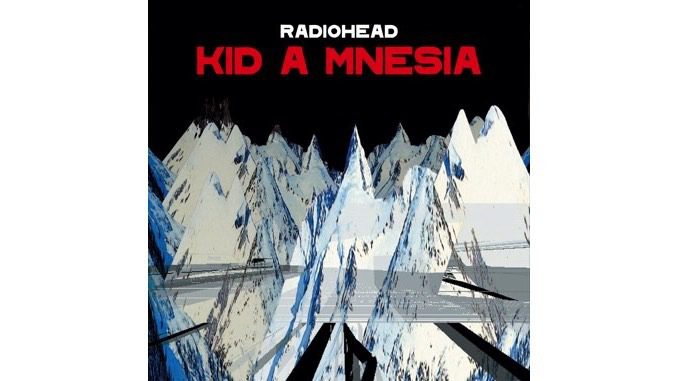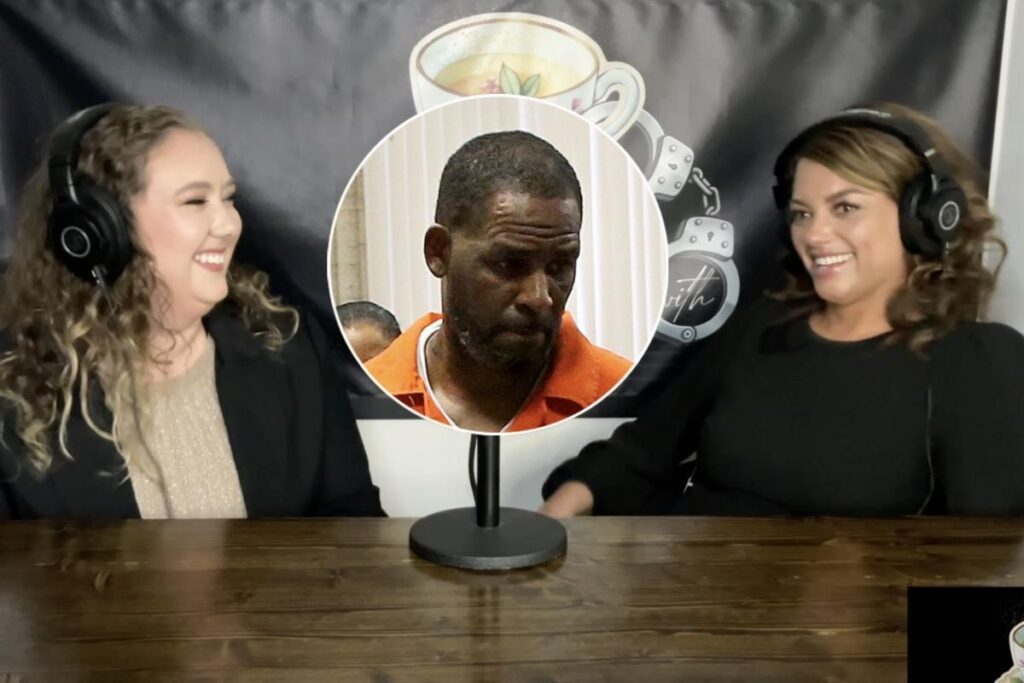Towards the end of the Radiohead documentary Meeting People Is Easy, which captures the English quintet growing increasingly confined within the comet trail of hype following their third album, 1997’s OK Computer, the audience gets a glimpse of the band in the studio in what appears to be a foreshadowing of things to come. The inclusion of this work-in-progress turns out to be something of a fake-out, though, as the song in question, titled “Man of War,” had already been recorded multiple times dating back to 1994. Likewise, the live footage that closes out the film, a Radio City Music Hall performance of the “new” song “Nude,” is supposed to leave the audience with a tingle of suspense, a device set up to have viewers thinking “I wonder what they’ll do next” as the credits roll. But setting aside the fact that “Nude” did resurface years later, it wasn’t actually a new song, either.
No surprise, then, that both “Man of War” and “Nude” slotted right in with the style and mood of OK Computer, an album that generated rapturous, near-universal praise from a music press that was eager to anoint Radiohead as the future of rock. In OK Computer, critics saw an era-defining work that we would forever look back on as a crucial turning point in the evolution of music. Never mind that that’s an oddly definitive declaration to make while you’re living through a moment—the fact is, OK Computer spoke to something deep and pervasive running through the nervous system of modern culture at the time, and the framing of the album as a ’90s answer to Pink Floyd’s Dark Side of the Moon made sense on a number of levels. Radiohead circa 1997 hadn’t become a quote-unquote progressive rock band, but their music was progressive in a broader sense.
Still, no one (perhaps not even the band themselves) had any idea how radical Radiohead’s next move would be. As much as OK Computer had been heralded as a turn into the uncharted—a signpost pointing the way to the future—the sound the band introduced in October 2000 with Kid A was something else entirely. In a sense, you could say that the digitized froth at the beginning of album opener “Everything In Its Right Place” was the sound of the future arriving at our doorstep. Listening to both albums in hindsight, OK Computer dates itself with elements that telegraph the ’90s sensibility it was born out of. Kid A, on the other hand, remains strangely untethered from time. Which is not to say that we shouldn’t read between the lines to spot the unease that attended our transition into a new millennium, but only that we should be cautious in doing so.
Of course, culture pundits haven’t exactly held back from making bigger-picture connections. Steven Hyden, for example, has long advanced the idea—via outlets like Billboard, Grantland, etc.—that Kid A changed the paradigm, not only at the level of music consumption, but also with respect to how the entire music-opinion ecosystem operates. (He devoted his 2020 book This Isn’t Happening, excerpted here, to the same premise). Chuck Klosterman, meanwhile, went so far as to suggest that the album’s song sequence somehow presaged the events of 9/11. In other words, this is music that’s been analyzed to death from the moment it saw the light of day. Not to mention that we were also privy to periodic in-game commentary from the horse’s mouth, as guitarist Ed O’Brien kept an online studio diary from July of 1999 to June of 2000.
Sure, it might be useful to revisit an organic five-piece rock band’s move from the rehearsal studio to hard disk as its primary canvas, and to explore what that might connote about the rest of us migrating to virtual spaces not long afterwards, or to take another look at message boards populated by fans of groups like Radiohead and analyze them as a precursor to social media. Fair enough, but there’s really nothing new to say about Kid A, other than the fact that it still sounds as alien and revelatory today as it did on its arrival. And truth be told, we didn’t need a box-set reissue to remind us.
Alas, now that we have one in the form of Kid A Mnesia, here’s a run-down of the basics: “Bored of playing guitars” at the conclusion of the touring cycle for OK Computer, as O’Brien told the BBC two weeks after Kid A’s release, Radiohead looked to artists like Aphex Twin, Autechre, Boards of Canada and Massive Attack for inspiration. It was important to the band, O’Brien stressed, that they avoid what he called the “dull compromise” he felt was typical when guitar-centric acts incorporated electronic elements in unimaginative ways. And certainly, whatever you feel about the results they came up with, no one can accuse Radiohead of falling short on imagination during this period. From January of 1999 to April of 2000, the band worked, often fruitlessly, on ways to deconstruct and re-engineer their sound, relying on an array of electronic instruments and computer-based tools while backing away from conventional melodies, structures, arrangements and lyrical continuity. The body of work they came up with was enough to fill a double album, so they split it up into two parts: Kid A and a companion full-length, Amnesiac, released eight months later in May of 2001.
Across the two albums, example after example shows just how revolutionary this music was—and still is. On several tracks, such as the song “Kid A,” which was assembled primarily by guitarist/multi-instrumentalist/composer Jonny Greenwood, the soundscape is so barren that one wonders where the band went. Indeed, “Kid A” allows us to imagine what it might feel like to play a steel drum from a trans-humanist perspective, and both albums at times sound like they were made by musicians who got sucked into a server and are now communicating to us after merging with a machine consciousness. On Kid A’s more organic-sounding tunes—“Optimistic,” the Charles Mingus-inspired “The National Anthem,” etc.—one clearly hears the interplay of guitars, bass and drums, and yet Greenwood, O’Brien, bassist Colin Greenwood, drummer Phil Selway and frontman Thom Yorke may as well be ghosts haunting their own music as they recede into an eerie synthetic ambience that howls, cries and whispers like a steady wind.
At the time of Kid A’s release, it was clear that the band was voicing a malaise bubbling up in our collective awareness as we hurtled towards a heavily media-enmeshed way of life. None of us could have known what that would look like two decades later, but listening back now, it seems safe to say that we had some gut-level precognition of what it would feel like, which is part of why Kid A still resonates so strongly. Of course, Radiohead weren’t the first to go down this musical path, or to explore what technology implicated for our state of mind. To name just two: U2 tackled like-minded themes while self-consciously running their sound through a modernist filter on 1993’s Zooropa, and Wilco did the same immediately after Kid A (though they appear to have been headed in a parallel direction, independently of any influence from Radiohead). What makes Kid A stand out, though, is that as cold and artificial as the band made this music sound on purpose, it somehow conveys the beauty of what it means to be sentient enough to feel these anxieties in the first place.
Paradoxically, by atomizing the concept of a band playing together in a room, Radiohead got across—in vivid and startlingly fresh detail—what it means to be human. More than anxious, Kid A sounds oddly liberated. Amnesiac, meanwhile, veers even further into abstract territory on songs like “Packt Like Sardines in a Crushd Tin Box” and “Pulk/Pull Revolving Doors.” But because the public had gotten two-thirds of a year to acclimate to Radiohead’s new direction, Amnesiac’s impact was inevitably muted, even for those who favor it over Kid A. Moreover, in spots Amnesiac gives the initial appearance of the band leaning more conservative. Listening to the two albums back-to-back, we can recognize Radiohead as the same group who made their first three records by Amnesiac’s second track, titled “Pyramid Song.” Less sonically unified than Kid A, Amnesiac appears to document Radiohead coming back down to earth as the music zig-zags between the avant-garde and the familiar.
Appearances, of course, can be deceiving, and we can look to Amnesiac’s more traditional-sounding moments to see that Radiohead didn’t need to rely on strange sounds to be innovative. “You And Whose Army” starts out as something akin to jazz guitar interpretations of the standard “Beautiful Love” before instantly shape-changing into plush pop along the same lines as Radiohead’s peers in the British band Elbow. Finally, the song settles into a dreamlike denouement imbued with the slightest residual traces of gospel. The smoothness of these changes obscures just how skillful the band is at executing them. Similarly, “Knives Out” and “Dollars & Cents” see Radiohead delving into twangy, David Lynch-ian lounge music and bossa nova, respectively. Closer inspection, however, reveals that the band were able to subvert any style they touched while being really subtle about it.
As much as Radiohead were prone to burying themselves in noise at this time, they could also be sneaky in the way they leaked experimentation into the music. Atmosphere and texture take center stage on Kid A, but on Amnesiac, the band’s artier, more dissonant instincts often linger at the margins, threatening to eat into the songs like heat or chemicals melting into a celluloid film reel. One can spend endless hours comparing and contrasting the two albums, as fans no doubt have. With that in mind, the best that can be said about this new box set is that it allows us to re-imagine what it would have been like had both records dropped on the same day. Of course, we can all simulate that same feeling rather easily on our own by assembling both records into a single playlist. Ostensibly, the real selling point here, then, is the inclusion of a “third album” of previously unreleased material from the same sessions. And this is where Kid A Mnesia disappoints in spectacular fashion.
The third disc, annoyingly titled Kid Amnesiae, starts off promisingly enough with a straight piano version of “Like Spinning Plates.” If you listen in one sitting, this version plays just two tracks after the backmasked version on Amnesiac, so it gives an immediate sense of reprise, as if announcing a plunge back into a period of voracious creativity for the band. What long-buried treasures await my ears just up ahead? one wonders at the outset of this third disc. The answer, shockingly enough, is almost none. Even if you consider the advance-shared “Follow Me Around” an essential lost gem, its raw acoustic format doesn’t match the rest of the material at all. Another focus track, “If You Say the Word,” falls closer to the appropriate style and tone, but is mixed more like a demo, and in any case isn’t enough to compensate for what amounts to an assortment of half-baked leftovers.
Only four of the 12 tracks here stretch past four minutes, with the majority of them clocking in at under two. That would be excusable if these leftovers revealed anything about what it must have been like to be in the room while making a pair of classic albums. Surely, the band could have put together a set of tracks that mirrored the arc of their creative process from 1999 to 2000, but Kid Amnesiae doesn’t even come close. In fact, it falls miserably short. Of course, there are flashes: The “True Love Waits” version of “Pulk/Pull Sliding Doors” whets the appetite, but then trails off way too prematurely. Likewise, the Mediterranean/North African groove of “Alt Fast Track” hints at possibilities, but ultimately frustrates in just the way you’d expect from a glorified sketch that no one bothered to dress up with post-production after the fact so as to make it more palatable or interesting.
For a band that once put together an EP of leftovers that rivals the same punch and flow as a full album (see: How Am I Driving?), the carelessness in the way these extras are tossed onto the dish seems way out of character. If indeed the band felt that there wasn’t much left from a year and a half’s worth of recording—hard to believe, considering we already know that Radiohead’s meandering doodles from this period can be mesmerizing—then the more dignified approach might just have been to conjoin the two main titles, rather than dangle the possibility of a “third album” in front of the fans. The hardcore fans who would be expected to shell out for this set are the very same fans who’ve pored over alternate versions, bootlegs and leaked recordings for the last 20+ years. It’s hard to imagine them being impressed.
After taking in all the depth and substance of the two albums proper, Kid Amnesiae goes down like the powdery dregs at the bottom of a bag of chips. When you tilt the bag and swallow them, you feel unsatisfied, like you should have stopped while you were ahead. To be fair, any chance to get a better look at artist Stanley Donwood’s accompanying artwork is worth a shot, but two art books released the day before this set (KID A MNESIA Art Book and Fear Stalks the Land!) cover that base more thoroughly than this package does.
And it’s telling that the band opted not to remaster the original mixes. That’s because it wasn’t necessary, which then begs the question: Why repackage these titles in the first place? If you truly want to honor them, their original presentation and their place in time, then all you have to do is hunt down the original CD copies. All but the most ardent completists are advised to try that in lieu of getting their hopes up for Kid A Mnesia. If there was anything left at the bottom of this well, you won’t find it here. Besides, we got more than enough out of that well the first time.
Saby Reyes-Kulkarni is a longtime contributor at Paste. He believes that a music journalist’s job is to guide readers to their own impressions of the music. He also dreams of being a “setlist doctor” to the bands you read about in these pages, and has started making playlists for imaginary shows that your favorite band never actually played. You can read his work, listen to his interviews and playlists at feedbackdef.com, and find him on Twitter.




